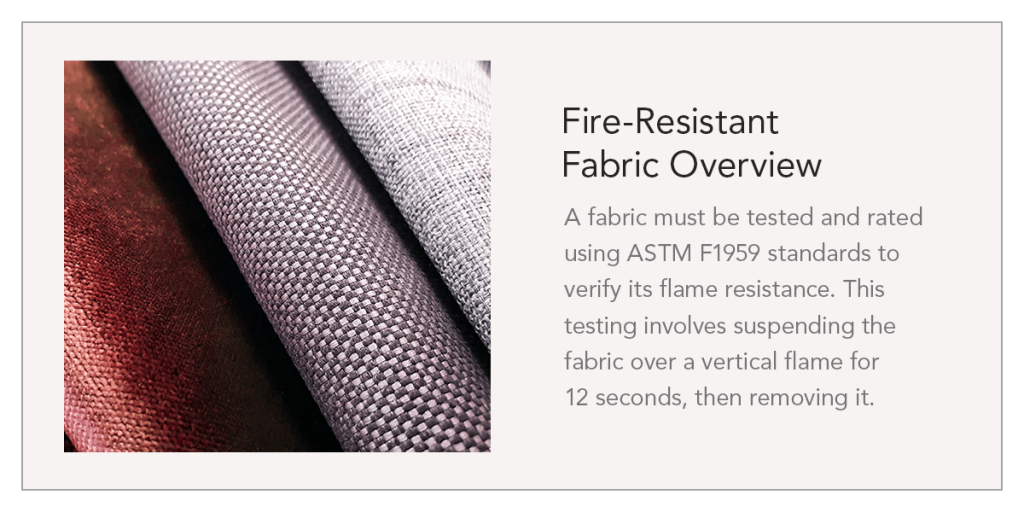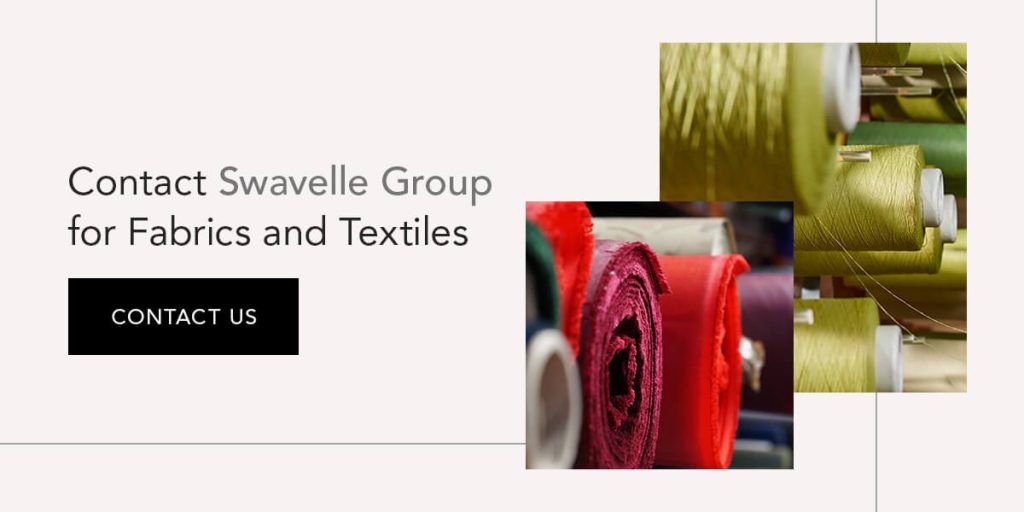Fire-retardant and flame-resistant fabrics are critical safety precautions in many commercial, industrial and municipal settings. Over the years, chemical advancements have allowed manufacturers and chemists to improve flame-resistant and flame-retardant properties for textile products, such as:
A common misconception is that the terms “fire-retardant” and “fire-resistant” are interchangeable. While these two fabric classifications are similar, there are some key differences. This article compares fire-resistant and fire-retardant fabrics and covers some essential considerations before investing in either of these fabrics.
National Fire Protection Association (NFPA) standards legally require flame-retardant fabrics and materials in most public spaces, including schools, churches and theaters.
When a house fire occurs, upholstered furniture is usually the first thing to catch fire. That’s why, as of June 2021, the United States Consumer Product Safety Commission (CPSC) requires upholstered furniture to comply with federal flammability standards.
Manufacturers must specify on the product labels that the upholstered furniture complies with CPSC flammability requirements. Additionally, the CPSC advises manufacturers to make it easy for consumers to locate these labels.
It is important to know the difference between fire-retardant and flame-resistant fabrics. This helps people understand how much protection they’ll receive when purchasing upholstered furniture and other fabric-based items. Learn the differences between flame-resistant and fire-retardant materials to understand exactly what these labels entail.
Flame retardants are chemical substances that offer flame resistance when applied to a fabric. Flame-retardant or fire-retardant fabrics include a special finish with these chemical fibers.
This coating helps resist the spreading of flames. Additionally, fire-retardant fabrics burn at a much slower rate than their standard untreated counterparts. Over time, however, these chemicals will wear off when the fabric is washed. This renders them ineffective unless the chemicals are reapplied.
There are three classifications of flame retardancy.
FR fabrics are woven from threads treated with a flame-retardant chemical, meeting fire safety codes in the NFPA 701 Test. NFPA 701 measures a material’s flammability when exposed to specific ignition sources. It also measures a fabric’s ignition resistance after 12 seconds of flame exposure.
The fabric is considered “non-flame retardant” (NFR) before treatment. The manufacturer dissolves the FR chemicals in water and applies them to the fabric by dipping or spraying.
Once the textile dries, the chemicals remain adhered to the fibers. This renders the fabric flame-retardant, at least for a short period. Contact with water can gradually dissolve and remove these chemicals until the fabric is NFR again. When this occurs, the fabric should be thoroughly washed and chemically treated to restore its flame retardance. Alternatively, you can replace the fabric altogether.
IFR fabrics are woven with threads to uphold NFPA 701 Test standards. However, they do not require additional chemical treatments after frequent washings. IFR fabrics contain noncombustible elements. They should retain their fame retardance permanently, even when exposed to water.
DFR fabrics also meet the minimum requirements in NFPA 701. However, unlike FR fabrics with topically applied chemicals, DFR fabrics use non-water-soluble chemical compounds that attach to the fibers. This creates a flame-retardant fabric that can withstand up to 25 washes when properly laundered.
Because contaminants like oil and airborne dust can diminish flame retardance, annual testing based on NFPA 705 standards is strongly recommended for FR, IFR and DFR fabrics.
Flame-resistant materials contain synthetic fibers that resist ignition and self-extinguish under prolonged heat or flame exposure. Because these fabrics are woven from inherently fire-resistant fibers, they are often called IFR fabrics.
These fabrics will eventually start to melt rather than burn. IFR fibers can make up a small portion of the fabric or the whole cloth, depending on the manufacturer.
A fabric must be tested and rated using ASTM F1959 standards to verify its flame resistance. This testing involves suspending the fabric over a vertical flame for 12 seconds, then removing it.
The fabric should self-extinguish in two seconds or less to pass the test. Additionally, it should have a minimal length of 6 inches or less when used for arc flash protection and 4 inches or less if used for flash fire protection.
In summary, flame-retardant fabrics undergo chemical treatment to give them fire-resistant and self-extinguishing properties. Conversely, flame-resistant fabrics are constructed with fibers that resist burning when they come into contact with flames.

There are a few important considerations before investing in a fire-retardant or flame-resistant fabric.
Flame-resistant fabric tends to cost more than flame-retardant fabric, as it lasts longer and doesn’t lose its integrity with regular washes. That means you’ll have to decide whether to spend less on fire-retardant gear and replace it more frequently or spend more on flame-resistant options that last much longer.
Consider the circumstances your employees work in and the level of fire protection they will require. The NFPA has a guide that outlines the differences between flame-retardant and flame-resistant classifications, helping guide employers’ decisions in protecting staff from short-term flame exposure.
The NFPA’s guidelines rank hazard risks from Category 1 to Category 4. The higher the category, the higher the protection level. Low-hazard applications typically only warrant Category 1 or 2 protection, while more hazardous tasks require Category 3 or 4.
Chemically treated flame-retardant fabrics only retain their flame-retardant qualities temporarily. The chemicals start to fade after a certain number of washes. Additionally, there are stringent guidelines for laundering flame-retardant fabrics. Check the tag and follow the manufacturer’s care and maintenance instructions.
Flame-resistant fabrics have rigorous laundering requirements, as well. However, these materials are inherently fire-resistant. That means they will maintain their performance far longer than treated fabrics, regardless of how frequently you launder them. Be sure to factor these laundering requirements into your decision.
High-quality fabric is a must for many markets, including residential, outdoor, contract and RV. If you are looking for durable, long-lasting textile products for your customers, Swavelle Group can help. We are a proud leader in the textile industry and can work with you to create beautiful fabrics tailored to your specifications.
Swavelle Group produces various fabric products, from delicate embroideries to bold prints and textures. We also prioritize sustainability in our manufacturing processes, so you can feel confident you’re choosing a company that values the environment.
You can trust Swavelle Group to deliver personalized attention, exceptional designs and prompt services for every project. Contact our team to learn more about our custom fabric products and services today.
